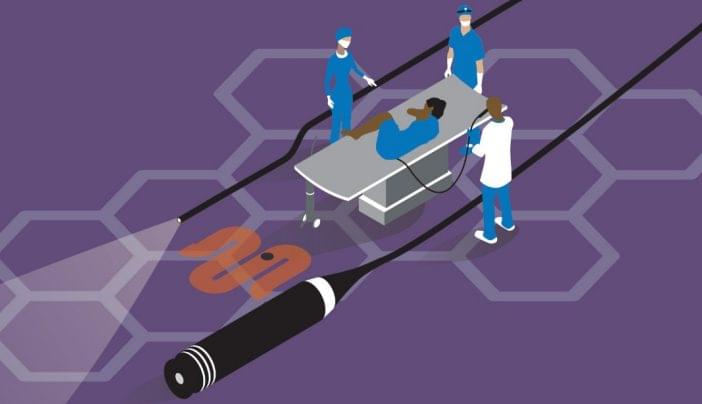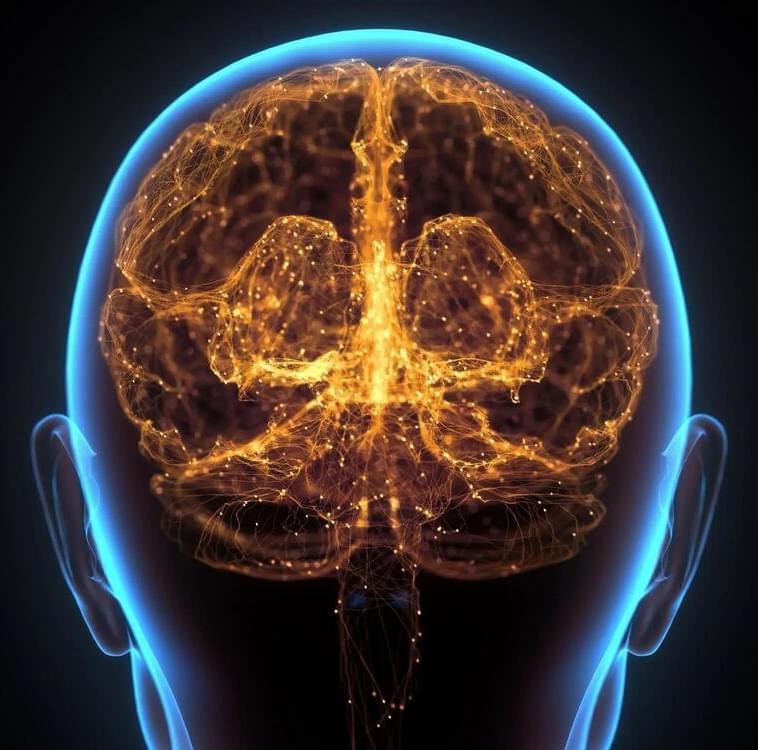The secret mode, which the hacker nicknamed “Elon Mode,” allows for completely hands-free driving during Full Self-Driving mode.
Get the latest international news and world events from around the world.

Research says your ability to ‘bulls—’ may be a sign of intelligence
“If someone is a good bulls—er, they are likely quite smart,” says Martin Turpin, a graduate student at the Reasoning and Decision Making Lab at the Unversity of Waterloo and co-lead on the study recently published in the scientific journal Evolutionary Psychology.
Turpin and his colleagues found that people who are better at producing believable explanations for concepts, even when those explanations aren’t based on fact, typically score better on intelligence tests than those who struggle to “bulls—,” as the study puts it.” However, it is not the case that those who are not good bulls—ers are less intelligent,” Turpin says.

Stem Cell “Village in a Dish” Advances Research
Stem cells are a kind of blank slate; these cells are able to specialize or differentiate into various types of cells. Researchers also now know how to make stem cells from several adult cell types, so they can be widely used in research. Samples can also be taken from patients, and used to create cells that can be experimented with and studied in the laboratory. But to perform these studies, many cells had to be harvested from a lot of different donors, and then grown separately. Now researchers have developed a method for studying stem cells from many different people in the same dish, which could have major implications for the study of complex traits, drug safety, or personalized medicine.
The research team has called this method a “village in a dish” system, and it has been reported in the open-access journal Nature Communications. The investigators showed that by studying stem cells from many donors in the same culture dish, cell culture studies could be up to one hundred times more efficient.

Immunotherapy Can be Improved with Three Immune Cells
Immunotherapy is a fast-growing field designed to stimulate the immune system and target different diseases, including cancer. Some immunotherapies include immune cell activation therapies such as checkpoint inhibitors that block the interaction of cell markers which in turn allows the cell to kill the bound tumor cell. One example of a checkpoint inhibitor is anti-programmed cell death-1 (Anti-PD-1). Programmed cell death-1 (PD-1) is expressed on immune cells, specifically T cells. On responsibility of T cells include killing infected cells, such as cancer. The PD-1 marker is bound to PD-L1 on the infected cell and blocks the T cell’s ability to kill the tumor. Checkpoint inhibitors are effective in some subsets of cancer patients, but in more aggressive cancers such as liver cancer, immunotherapy is limited. Interestingly, a recent study in Nature Medicine by Dr. Miriam Merad and colleagues from the Ichan School of Medicine at Mount Sinai recently reported a new strategy to improve immunotherapy in liver cancer.
Merad and colleagues have uncovered a “trio of immune cells” within the tumor that helps improve immunotherapy. Researchers discovered this cohort of cells specifically in hepatocellular carcinoma (HCC), an aggressive and deadly liver cancer. It was demonstrated that specific populations in the tumor would be needed to activate T cells with immunotherapy, specifically anti-PD-1. Increased activation of T cells in HCC is critical because it demonstrates that an aggressive tumor has become sensitized to the immune system.
Researchers studied this phenomenon in patients to determine why some immune cells present in the tumor allow improved immunotherapy response, while others do not. The research team analyzed patient samples before and after checkpoint inhibitor treatment. Analysis was performed through computational methods, which allowed Merad and others to determine the immune cells necessary that help patients improve with immunotherapy. Through this computational cell analysis researchers are able to improve patient outcomes by determining if the “trio of cells” is present in the tumor.

How long does a colonoscopy take?
A colonoscopy is the best way to screen for colorectal cancer. Everyone at average risk for the disease should start getting them at age 45.
If you’re scheduled for your first colonoscopy, you may be wondering what to expect and how much time it will take. While the procedure itself could take as little as 20 minutes, once you factor in the prep and recovery time, the experience does take longer.
We spoke with gastroenterologist Mazen Alasadi, M.D., to learn more.

“Cytoelectric Coupling”: A Groundbreaking Hypothesis on How Our Brains Function
Brain waves act as carriers of information. A recently proposed “Cytoelectric Coupling” hypothesis suggests that these wavering electric fields contribute to the optimization of the brain network’s efficiency and robustness. They do this by influencing the physical configuration of the brain’s molecular framework.
In order to carry out its multifaceted functions, which include thought, the brain operates on various levels. Information like objectives or visuals is depicted through synchronized electrical activity among neuronal networks. Simultaneously, a combination of proteins and other biochemicals within and surrounding each neuron physically execute the mechanics required for participation in these networks.
A new paper by researchers at MIT, City University of London, and Johns Hopkins University posits that the electrical fields of the network influence the physical configuration of neurons’ sub-cellular components to optimize network stability and efficiency, a hypothesis the authors call “Cytoelectric Coupling.”
Why are wealthy men spending money to deep dive the ocean? | 60 Minutes Australia
Subscribe here: http://9Soci.al/chmP50wA97J Full Episodes: https://9now.app.link/uNP4qBkmN6
Watch the full interview here: https://youtu.be/gho0PlDU_TI
Filmmaker James Cameron has visited the Titanic wreck more than 30 times, and this sparked his love for deep ocean exploration. In this 2018 #60Mins interview, he said with most voyages to the ocean floor, the risk is high and rescue is difficult.
WATCH more of 60 Minutes Australia: https://www.60minutes.com.au.
LIKE 60 Minutes Australia on Facebook: https://www.facebook.com/60Minutes9
FOLLOW 60 Minutes Australia on Twitter: https://twitter.com/60Mins.
FOLLOW 60 Minutes Australia on Instagram: https://www.instagram.com/60minutes9
For over forty years, 60 Minutes have been telling Australians the world’s greatest stories. Tales that changed history, our nation and our lives. Reporters Liz Hayes, Tom Steinfort, Tara Brown, Nick McKenzie and Amelia Adams look past the headlines because there is always a bigger picture. Sundays are for 60 Minutes.
#60MinutesAustralia

NASA volunteers are about to enter simulated Mars habitat
Four volunteers are about to enter a simulated Mars habitat where they’ll spend the next 378 days as part of ongoing preparations for the first crewed mission to the faraway planet.
The specially designed, enclosed habitat at NASA’s Johnson Space Center in Houston, Texas, will host Alyssa Shannon, Ross Brockwell, Kelly Haston, and Nathan Jones from Sunday, June 25. The team’s experience spans science, engineering, and health, and each member will use their specific skills during their stay.
The mission will be the first of three one-year Mars surface simulations, called CHAPEA (Crew Health and Performance Exploration Analog).
Titan Sub Crushed Crew Lost
Debris field found — the crew perished in a catastrophic implosion. What are the lessons to be learned from this? How does this apply to future space, stratospheric, and oceanic tourism?
Inspire your kids to love science!
SAVE 20% OFF New Science Kits Using Code: NEWKITSSAVE20 At Steve Spangler Science dot com! Great Educational Products For Kids! SHOP NOW! https://www.pntra.com/t/SENKTExNSUhDR05OSUxJQ0dPRkxGRw.
Save 1% on GoldBacks from Green Greg’s affiliate link (Use coupon code GreenGregs):
For gardening in your Lunar or Mars habitat GalacticGregs has teamed up with True Leaf Market to bring you a great selection of seed for your planting. Check it out: http://www.pntrac.com/t/TUJGRklGSkJGTU1IS0hCRkpIRk1K
Awesome deals for long term food supplies for those long missions to deep space (or prepping in case your spaceship crashes: See the Special Deals at My Patriot Supply: www.PrepWithGreg.com.
For that off-grid asteroid homestead stock up with Lemans before you blast off: